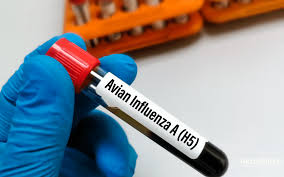The first human case of Avian Influenza A(H5N2) in Mexico highlights the virus’s potential to jump from birds to humans, necessitating global vigilance.
In 2024, Avian Influenza A(H5N2) has garnered attention due to its impact on both poultry and human health. Notably, Mexico reported the first confirmed human case of the H5N2 strain in May 2024. The case was a resident of the State of Mexico and marks the first human infection of this specific strain globally. The patient, who had multiple underlying conditions, was exposed in an area with recent outbreaks of both low and high pathogenicity avian influenza among poultry. The virus strain found in the patient was nearly identical to the one detected in birds from the region, suggesting a direct link between the poultry outbreaks and human infection.
The outbreak has led to heightened surveillance and public health responses. Mexican authorities, supported by the World Health Organization (WHO) and the Pan American Health Organization (PAHO), have implemented rigorous measures, including epidemiological investigations, monitoring of health workers, and enhanced surveillance of respiratory illnesses in nearby municipalities. These efforts aim to contain the virus and prevent further human cases.
Globally, the risk of sustained human-to-human transmission of H5N2 remains low, as the virus primarily spreads through direct contact with infected birds or contaminated environments. However, the situation highlights the ongoing threat posed by avian influenza viruses and the need for continued vigilance and preparedness.
Efforts are underway to strengthen diagnostic capacities and improve response strategies at the human-animal interface. While there is no specific vaccine for H5N2, candidate vaccines are being developed as part of broader pandemic preparedness initiatives.
This case underscores the importance of global cooperation in monitoring and managing zoonotic diseases to prevent potential future pandemics.
For more detailed information, you can refer to the WHO updates and other public health sources (World Health Organization (WHO)) (World Health Organization (WHO)) (Washington State Department of Health).
Introduction
Avian Influenza A(H5N2) has reemerged as a significant public health concern in 2024. The virus, which primarily affects birds, has now been identified as a potential threat to humans, following the first reported human case in Mexico. This incident has prompted renewed attention from global health authorities, emphasizing the importance of surveillance, research, and preparedness in managing zoonotic diseases. This article provides an in-depth analysis of the current status of the H5N2 virus, its implications for public health, and the measures being taken to mitigate its impact.
Background on Avian Influenza A(H5N2)
Avian Influenza A(H5N2) is one of several subtypes of avian influenza viruses that can infect birds. These viruses are categorized based on their pathogenicity—either high pathogenicity avian influenza (HPAI) or low pathogenicity avian influenza (LPAI). HPAI viruses are more virulent and cause more severe disease in birds, often leading to widespread outbreaks and high mortality rates. In contrast, LPAI viruses typically cause mild or asymptomatic infections but have the potential to mutate into HPAI strains under certain conditions.
The H5N2 subtype has been circulating in various bird populations for several years, particularly in North America. It is part of the broader H5 lineage, which includes other well-known subtypes like H5N1 and H5N8, both of which have caused significant outbreaks in birds and occasional human infections. H5N2 was previously considered less of a threat to humans compared to H5N1, which has a higher case fatality rate. However, the recent human case in Mexico has raised concerns about its potential to cause illness in humans.
The 2024 Outbreak and First Human Case
In March 2024, the first human case of H5N2 was confirmed in the State of Mexico. The patient, a resident of Michoacán, was hospitalized with severe respiratory symptoms and later tested positive for the virus. This case is particularly notable because it represents the first time that the H5N2 virus has been detected in a human. The patient had multiple underlying health conditions, which may have contributed to the severity of the illness. Despite the intensive care provided, the patient unfortunately succumbed to the infection.
The virus strain found in the patient was closely related to the strains detected in poultry in the region, suggesting that the infection was likely acquired through direct or indirect contact with infected birds. This incident has raised concerns about the potential for the H5N2 virus to spill over from animals to humans, particularly in areas where poultry farming is prevalent (World Health Organization (WHO)) (World Health Organization (WHO)).


